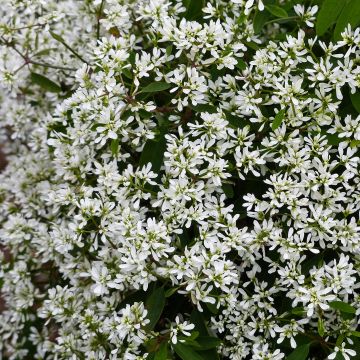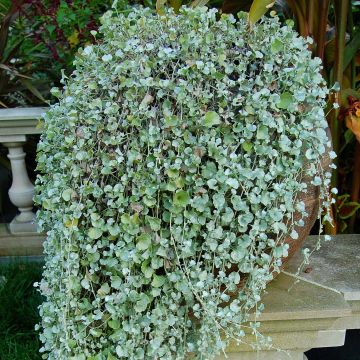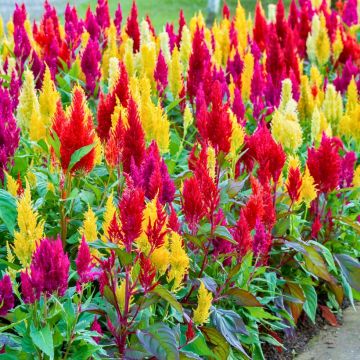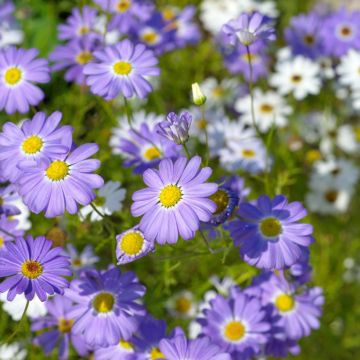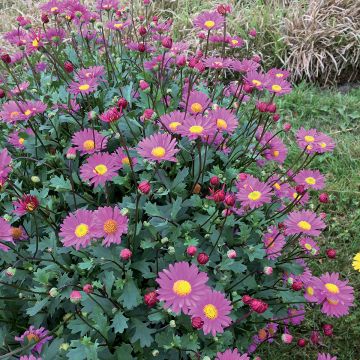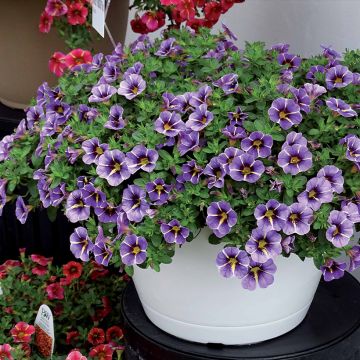

Euphorbia Diamond Frost


Euphorbia Diamond Frost


Euphorbia Diamond Frost


Euphorbia Diamond Frost


Euphorbia Diamond Frost
Euphorbia Diamond Frost
Euphorbia hypericifolia Diamond Frost
Spurge
Plant took a bit long to start, but afterwards superb!
Dindine , 15/10/2024
This item cannot be shipped to the selected country
Delivery charge from €6.90
Delivery charge from €6.90
More information
Delivery charge from €6.90
Delivery charge from €6.90
More information
Schedule delivery date,
and select date in basket
This plant carries a 6 months recovery warranty
More information
We guarantee the quality of our plants for a full growing cycle, and will replace at our expense any plant that fails to recover under normal climatic and planting conditions.
From €7.90 for pickup delivery and €6.90 for home delivery
Express home delivery from €8.90.
From €7.90 for pickup delivery and €6.90 for home delivery
Express home delivery from €8.90.
Does this plant fit my garden?
Set up your Plantfit profile →
Description
The Euphorbia or Chamesyce hypericifolia 'Diamond Frost' is a frost-sensitive plant grown as an annual in our climate, and has become essential in summer compositions in just a few years. Discreet in spring, it quickly shoots up and branches out, producing a multitude of small white flowers that resemble suspended snow crystals or a cloud of small white butterflies. It blooms tirelessly throughout the summer, regardless of the weather conditions, in both sun and shade. Place it everywhere, in your pots, planters, hanging baskets, or in the ground, combined with all your favourite plants. It weaves and adapts to the shape of its neighbours, enhancing their blooming.
The genus Euphorbia includes over 2000 species of annuals, perennials, shrubs, and succulents. Their diversity is astonishing, as is the structure of their flowers, which allows for easy recognition. In Euphorbias, the flower is composed of a stigma and a stamen, surrounded by often highly decorative bracts. All Euphorbias contain a milky sap or irritating latex in their tissues, which is easily visible when the stems are cut.
'Diamond Frost' Euphorbia is a horticultural hybrid obtained in Germany by the KIENTZLER company, notably from Euphorbia hypericifolia (or Chamesyce hypericifolia), a very frost-sensitive species native to Colombian forests. The plant grows rapidly in spring, as soon as the temperature exceeds 14°C. It produces slender stems that branch out endlessly, forming a rounded clump that can reach 70-80 cm (27.6-31.5 in) in all directions in just a few weeks. The stems bear entire, elongated leaves, 2.5 cm (1 in) long and a tender green colour. This variety blooms abundantly and continuously from mid-April until the first frost. The countless flowers, adorned with immaculate white bracts, are very small and incredibly light. The faded flowers fall off by themselves.
The low hardiness (-1°C) of this plant is not a drawback: it is entirely possible to overwinter it in a bright and lightly heated veranda, significantly reducing watering (2 to 3 times per month) to allow it to rest. Before bringing it back outside in spring, lightly prune it. Repot or provide slow-release fertilizer and resume watering. This variety will thrive when planted in a large pot of at least 10 litres, or in the ground.
Plant Diamond Frost Euphorbia in large flower pots, alongside Calibrachoa or petunias, geraniums, Peruvian heliotrope, begonias, or Russelia, for example. With this cloud-like plant, all fantasies are allowed, in the garden as well as on the terrace or balcony. It brings volume and lightness to all summer compositions and flower beds. Its combination with shrubby salvias, bush or ground-cover roses, or even hydrangeas is fantastic. Plant it en masse in front of a flowering or foliage shrub hedge, between the stones of a rockery, in a mixed border with Miscanthus, monardas, penstemons, asters... At the base of small columns marking a path or terrace... Or even in a large planter in a contemporary garden.
Note: Attention, our young plants in mini-pots are professional products reserved for experienced gardeners: upon receipt, transplant and store them under shelter (veranda, greenhouse, cold frame...) at a temperature above 14°C for a few weeks before being planted outdoors once all risk of frost has passed.
Flowering
Foliage
Plant habit
Safety measures
Botanical data
Euphorbia
hypericifolia
Diamond Frost
Euphorbiacées
Spurge
Cultivar or hybrid
atteintescutaneomuqueuses
Cette plante peut provoquer l'apparition de réactions cutanées indésirables, une atteinte des yeux, ou des difficultés respiratoires si elle est ingérée.
Ne la plantez pas là où de jeunes enfants peuvent évoluer. Evitez tout contact avec la peau: privilégiez l'emploi de gants pour la manipuler. En cas de contact, lavez-vous soigneusement les mains et rincez abondamment à l'eau la zone concernée. Lavez les vêtements entrés en contact. En cas de réaction cutanée, contactez votre médecin ou le centre antipoison le plus proche de chez vous. En cas d'atteinte étendue ou de difficultés respiratoires, appelez immédiatement le 15 ou le 112.Pensez à conserver l'étiquette de la plante, à la photographier ou à noter son nom, afin de faciliter le travail des professionnels de santé.
Davantage d'informations sur https://plantes-risque.info
Other Annual Euphorbia
Planting and care
Plant Diamond Frost Euphorbia in well-draining soil, which remains moist in summer, and in a sunny, partially shady, or even shady location. A good horticultural compost will do the trick. Monitor watering in summer (without excess) and regularly fertilise for flowering plants. Pruning is unnecessary.
The low hardiness (-1°C) of this plant is not a death sentence: it is entirely possible to overwinter it in a bright and lightly heated veranda by significantly reducing watering (2 to 3 times per month) to allow it to rest. Before taking it out in spring, lightly prune it. Vegetation resumes as soon as temperatures reach or exceed 14°C. Repot or provide slow-release fertiliser and resume watering. This variety will reach its full potential when planted in a minimum 10-litre pot or in the ground.
Planting period
Intended location
Care
-
, onOrder confirmed
Reply from on Promesse de fleurs
Plug plants - Annuals
Haven't found what you were looking for?
Hardiness is the lowest winter temperature a plant can endure without suffering serious damage or even dying. However, hardiness is affected by location (a sheltered area, such as a patio), protection (winter cover) and soil type (hardiness is improved by well-drained soil).

Photo Sharing Terms & Conditions
In order to encourage gardeners to interact and share their experiences, Promesse de fleurs offers various media enabling content to be uploaded onto its Site - in particular via the ‘Photo sharing’ module.
The User agrees to refrain from:
- Posting any content that is illegal, prejudicial, insulting, racist, inciteful to hatred, revisionist, contrary to public decency, that infringes on privacy or on the privacy rights of third parties, in particular the publicity rights of persons and goods, intellectual property rights, or the right to privacy.
- Submitting content on behalf of a third party;
- Impersonate the identity of a third party and/or publish any personal information about a third party;
In general, the User undertakes to refrain from any unethical behaviour.
All Content (in particular text, comments, files, images, photos, videos, creative works, etc.), which may be subject to property or intellectual property rights, image or other private rights, shall remain the property of the User, subject to the limited rights granted by the terms of the licence granted by Promesse de fleurs as stated below. Users are at liberty to publish or not to publish such Content on the Site, notably via the ‘Photo Sharing’ facility, and accept that this Content shall be made public and freely accessible, notably on the Internet.
Users further acknowledge, undertake to have ,and guarantee that they hold all necessary rights and permissions to publish such material on the Site, in particular with regard to the legislation in force pertaining to any privacy, property, intellectual property, image, or contractual rights, or rights of any other nature. By publishing such Content on the Site, Users acknowledge accepting full liability as publishers of the Content within the meaning of the law, and grant Promesse de fleurs, free of charge, an inclusive, worldwide licence for the said Content for the entire duration of its publication, including all reproduction, representation, up/downloading, displaying, performing, transmission, and storage rights.
Users also grant permission for their name to be linked to the Content and accept that this link may not always be made available.
By engaging in posting material, Users consent to their Content becoming automatically accessible on the Internet, in particular on other sites and/or blogs and/or web pages of the Promesse de fleurs site, including in particular social pages and the Promesse de fleurs catalogue.
Users may secure the removal of entrusted content free of charge by issuing a simple request via our contact form.

































